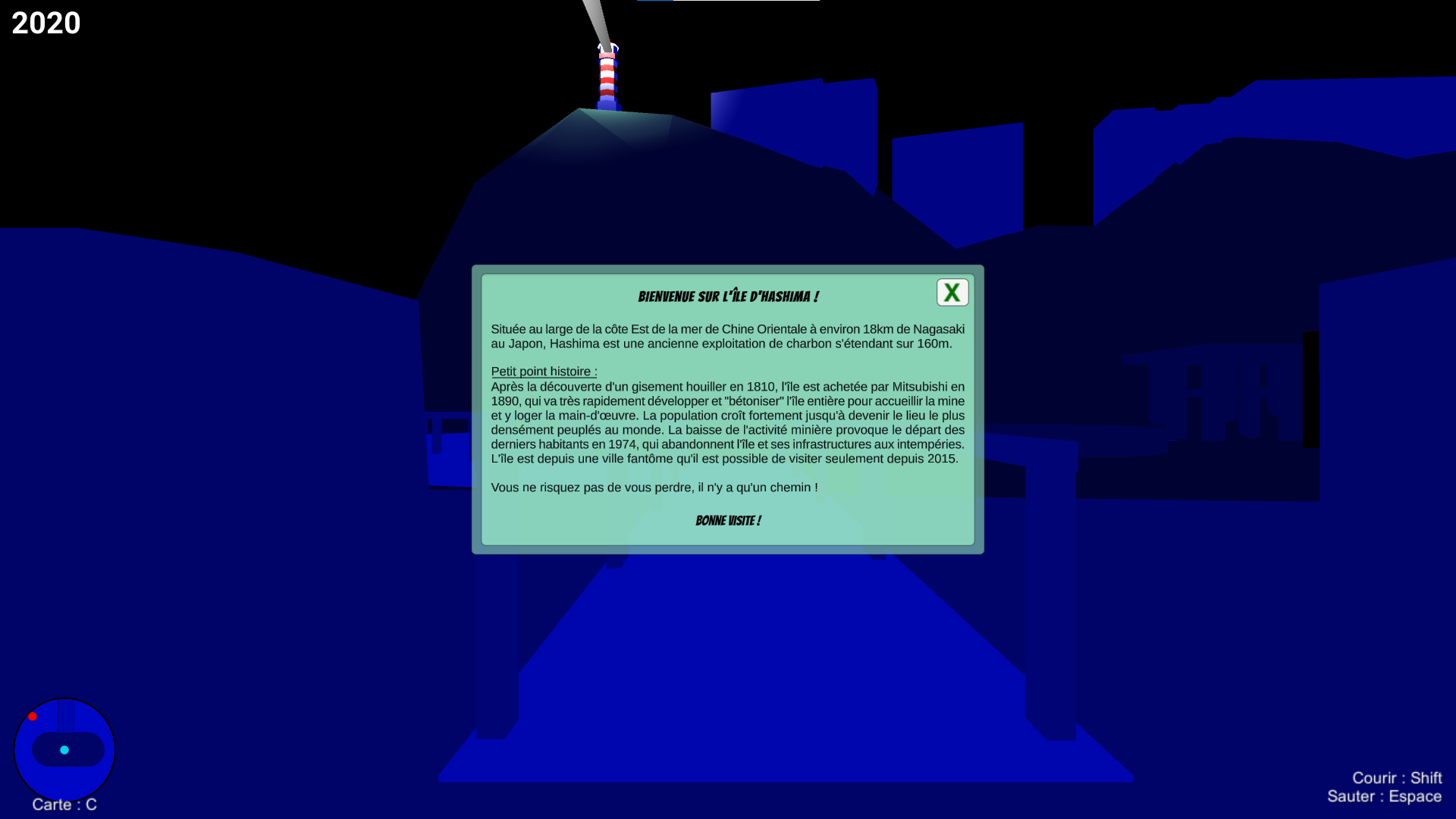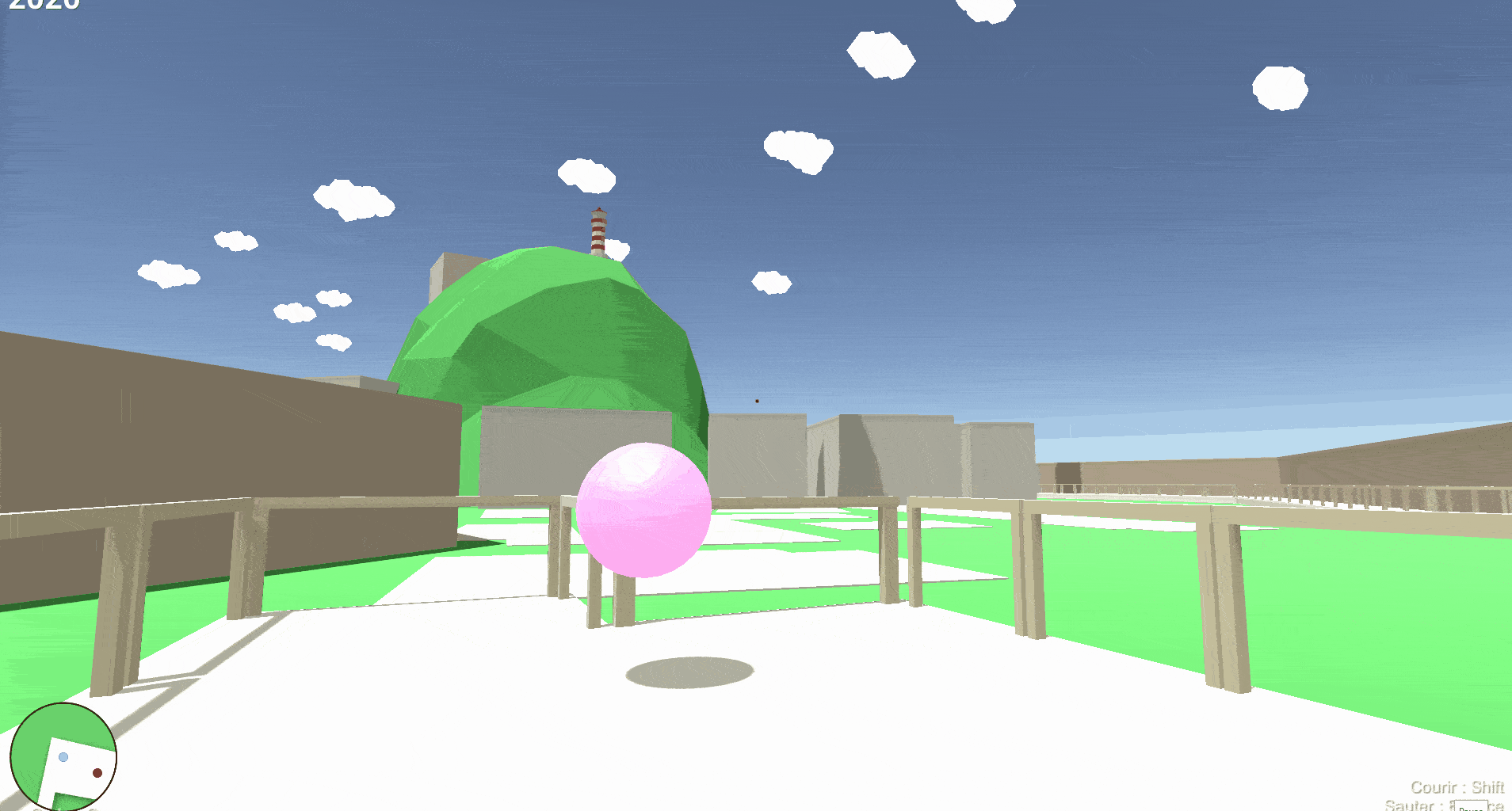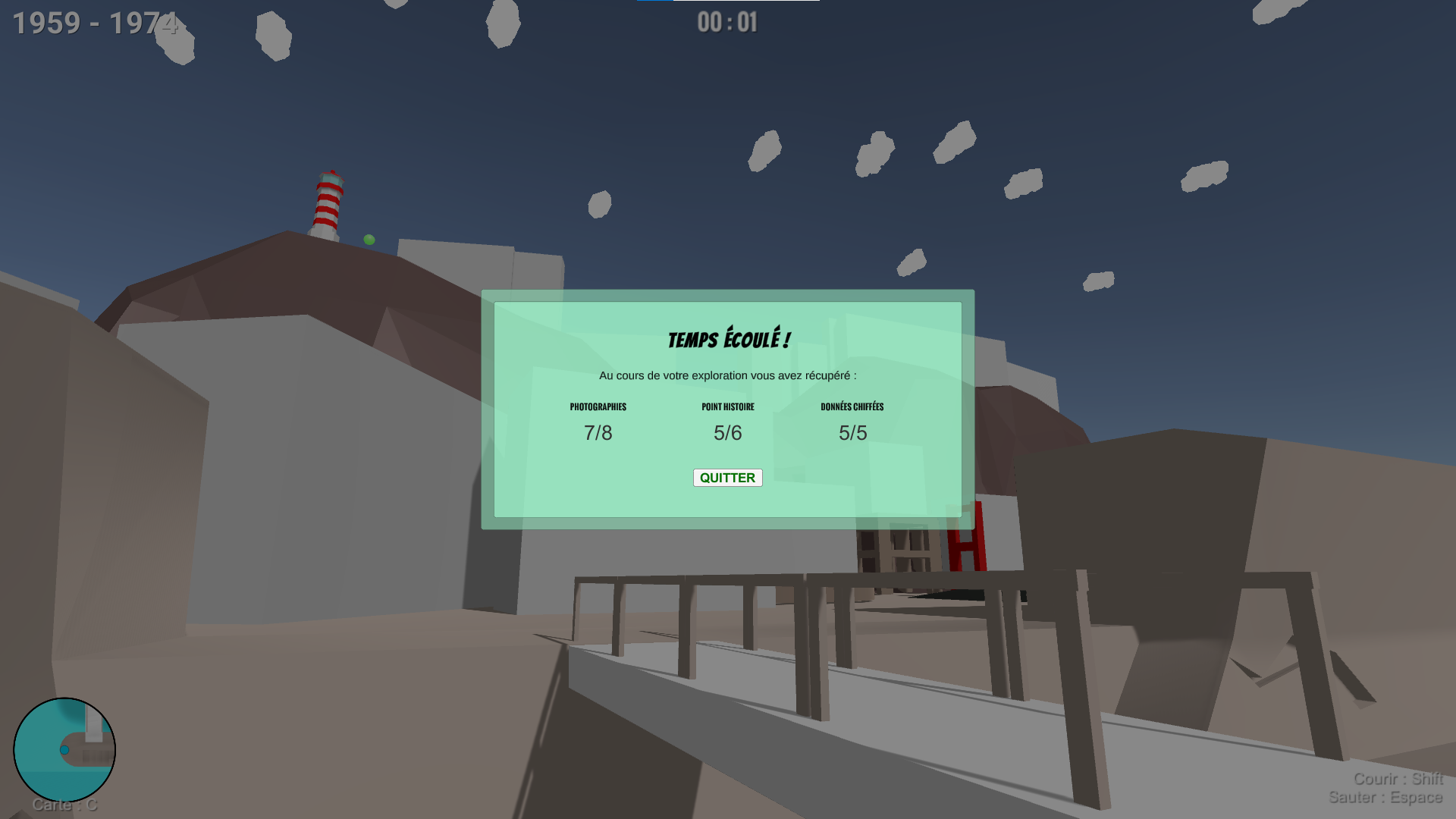Role: Solo Developer
Engine: Unity
Video: 🔗 Watch on YouTube
Download: 🔗 Play the Game
Overview
The Hashima Island (Midori Naki Shima - 緑なき島) is my first Unity prototype, a first-person exploration game set on the abandoned Hashima Island in Japan. The game allows players to observe, explore, and collect historical data, highlighting the impact of urbanization, industrialization, and abandonment—themes deeply tied to the Anthropocene.






Concept & Themes
The game is inspired by urban exploration (urbex), where players navigate through a forgotten landscape shaped by human activity and environmental reclamation. Hashima, once a thriving coal mining settlement built by Mitsubishi in 1887, was abandoned in 1974 as petroleum replaced coal. Over the decades, nature slowly reclaimed the island until it was reopened to tourists in 2009.
This project symbolizes the cycle of human expansion and retreat, showing how industrialized spaces transition into decayed relics over time.
Interactive Experience
Exploration & Navigation
- Players can walk, run, and jump while freely exploring the island.
- Falling into the ocean triggers an automatic repositioning back on the island.
- The environment is designed as a realistic recreation of the official tourist path.
Time Travel Mechanic
- The game begins in the modern era (2020), where players receive historical context through an interactive pop-up.
- At the end of the guided tour, interacting with a sphere teleports the player back to a past version of Hashima.
Information Collection Challenge
- Players have 5 minutes to explore and collect data about the island’s past.
- Three types of historical information are scattered across the island:
- 📷 Photographs from the past (pink markers)
- 📜 Historical facts (green markers)
- 🔢 Statistical data (yellow markers)
- Data points are collected upon interaction, triggering text-based historical insights.
Endgame & Results
- Once the 5-minute timer expires, a final summary pop-up appears.
- Players can review how much information they successfully gathered and what they missed.
Developing The Hashima Island (Midori Naki Shima) was an opportunity to merge game design, historical storytelling, and environmental themes into a compelling interactive experience. The project allowed me to explore level design, player guidance, and information-based progression systems in Unity.
